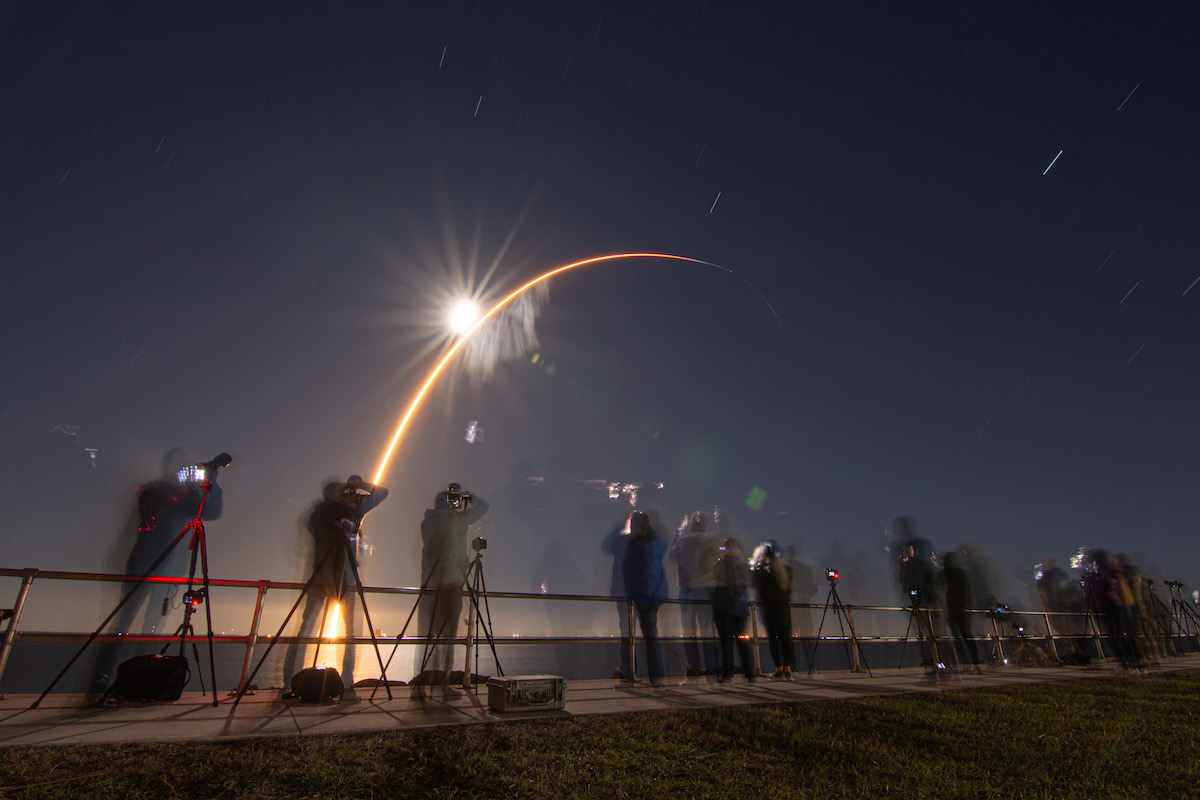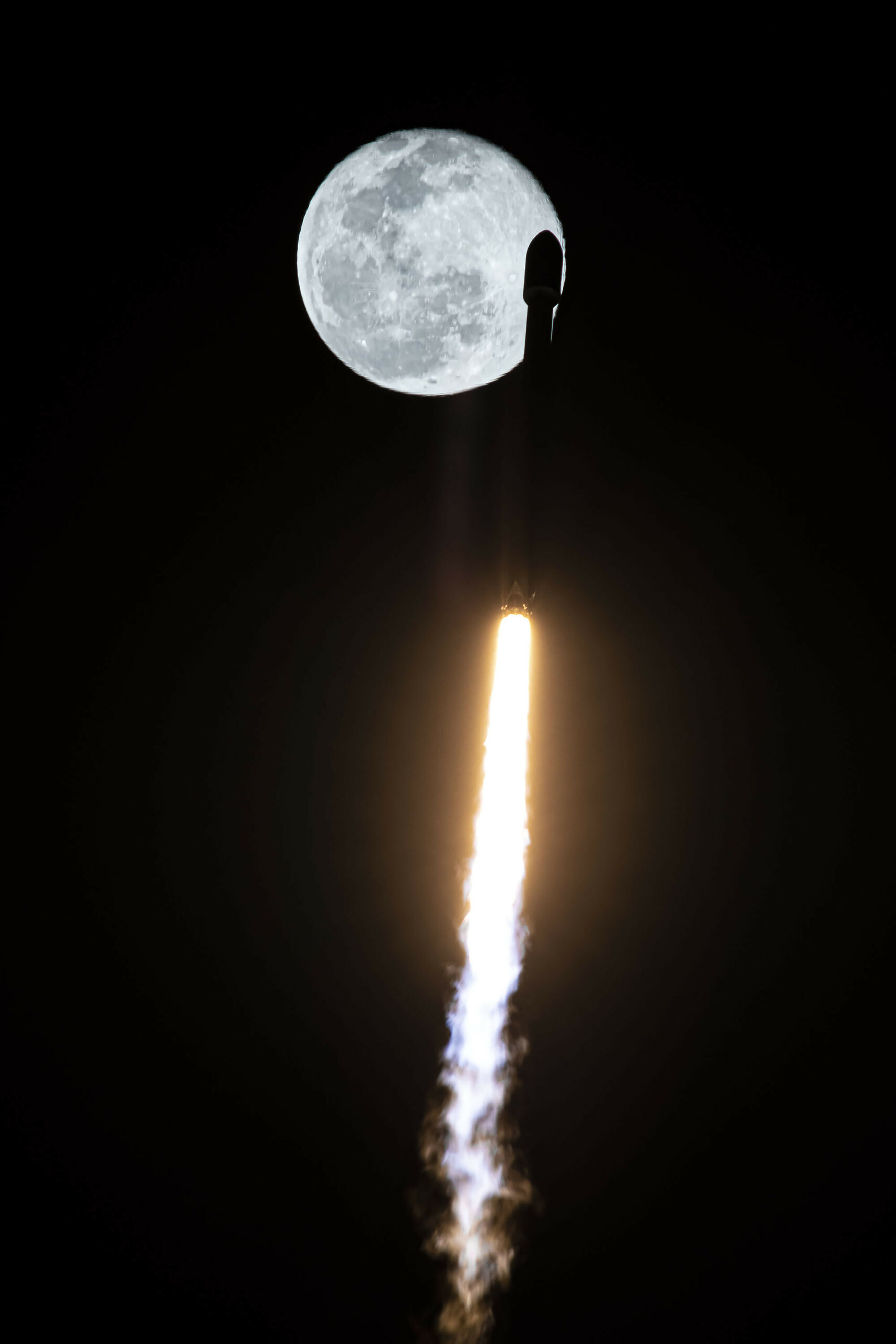
A package of 49 Starlink satellites that rode a Falcon 9 rocket into orbit Tuesday night from Florida included the 2,000th spacecraft to launch into SpaceX’s broadband internet network.
The successful orbital deployment of SpaceX’s newest 49 satellites brought the total number of Starlink spacecraft built and launched to 2,042, including prototypes and testbeds no longer in service.
Elon Musk, SpaceX’s founder and CEO, tweeted Saturday that the company has 1,469 active Starlink satellites, plus 272 spacecraft still maneuvering to their operational orbits. He added the laser inter-satellite links, used to beam internet traffic from spacecraft to spacecraft without going through a ground station, will activate soon.
More than 200 Starlink satellites have failed or been decommissioned. Some of those Starlink spacecraft were earlier models, either used as test versions or obsolete.
The latest Starlink mission was the 35th dedicated Falcon 9 launch to build out the network.
The 229-foot-tall (70-meter) launcher lifted off from pad 39A at NASA’s Kennedy Space Center at 9:02:40 p.m. EST Tuesday (0202:40 GMT Wednesday) and climbed into moonlit sky, arcing downrange toward the southeast over the Atlantic Ocean.

The mission was originally supposed to take off Monday night, but SpaceX delayed the flight by a day to wait for improved weather conditions at the Falcon 9 booster’s offshore recovery site near the Bahamas.
SpaceX bypassed another launch opportunity at 7:04 p.m. EST Tuesday without explanation, and instead targeted a backup launch slot at 9:02 p.m.
Nine Merlin engines ramped up to full throttle, generating 1.7 million pounds of thrust, to power the Falcon 9 off the launch pad.
A high-magnification night-vision tracking camera showed the rocket’s first stage shutting down its engines two-and-a-half minutes into the mission. The booster stage jettisoned moments later, and the second stage lit its Merlin engine with a puff of exhaust to continue the climb into orbit.
The first stage followed a parabolic trajectory, briefly soaring above the atmosphere beyond the edge of space before plunging back to Earth for a propulsive landing on SpaceX’s drone ship “A Shortfall of Gravitas” around 400 miles (650 kilometers) southeast of Cape Canaveral near the Bahamas.
The on-target landing completed the 10th flight of the booster used on Tuesday night’s mission. The booster — tail number B1060 — debuted on June 30, 2020, with the launch of a U.S. military GPS navigation satellite.
Liftoff of SpaceX’s Falcon 9 rocket with 49 Starlink internet satellites, lighting up the night sky over Florida’s Space Coast. https://t.co/lRbPiUzMJS pic.twitter.com/NGuDsNgnBB
— Spaceflight Now (@SpaceflightNow) January 19, 2022
The booster has sent 487 satellites toward space on its 10 missions, and the successful landing Tuesday night give the rocket a chance for an 11th flight once the drone ship returns to Port Canaveral. SpaceX has now flown four of its reusable boosters at least 10 times, with one rocket already logging 11 missions.
The Falcon 9’s upper stage delivered its 49 Starlink satellites payloads into orbit nearly nine minutes after liftoff Tuesday night.
The rocket passed out of range of SpaceX’s ground stations before releasing the satellites, so ground teams were unable to confirm the deployment event until the Falcon 9 flew around the world and back over a tracking site in Alaska around 10:30 p.m. EST (0330 GMT).
Telemetry relayed through the Kodiak Island site indicated the 49 Starlink satellites had separated into orbit close to the intended altitude and inclination. The target orbit ranged in altitude between 130 miles and 210 miles (210 by 339 kilometers), with an inclination of 53.2 degrees to the equator.
An infrared tracking camera showed spectacular views of main engine cutoff, stage separation, and second stage ignition two-and-a-half minutes after liftoff of SpaceX’s Falcon 9 rocket. Watch live: https://t.co/lRbPiUzMJS pic.twitter.com/hdnZmKbbxO
— Spaceflight Now (@SpaceflightNow) January 19, 2022
The confirmation of satellite separation wrapped up the third Falcon 9 launch of the year, following missions Jan. 6 and Jan. 13 from Florida’s Space Coast with an earlier batch of Starlink satellite and the Transporter 3 small satellite rideshare flight.
Tuesday night’s mission, officially named Starlink 4-6, clears the way for two more SpaceX launches from Florida on Jan. 27 and Jan. 29, carrying an Italian radar remote sensing satellite and another group of Starlink spacecraft, respectively.
SpaceX has a long-term plan to launch as many as 42,000 Starlink satellites, according to a company filing with the International Telecommunication Union. The company’s initial focus is on deploying thousands of satellites into five orbital “shells.”
The 53.2-degree inclination shell, the target for Tuesday night’s launch, is one of the five orbital shells at different inclination angles that SpaceX plans to fill with around 4,400 satellites to provide high-speed, low-latency broadband connectivity around the world. The first shell, at 53.0 degrees, was filled with its full complement of satellites last May.
To space and back for a 10th time!
SpaceX’s Falcon 9 booster stage — numbered 1060 in the reusable rocket fleet — has completed its 10th mission after landing on SpaceX’s drone ship in the Atlantic Ocean near the Bahamas.https://t.co/lRbPiUzMJS pic.twitter.com/Y0cOY5BybY
— Spaceflight Now (@SpaceflightNow) January 19, 2022
As of earlier the month, SpaceX said the Starlink network is now live in 25 countries and regions, serving more than 145,000 users worldwide. SpaceX builds its Starlink satellites on an assembly line in Redmond, Washington, and the company is developing and iterating its own user terminals.
SpaceX hopes to use revenue from the Starlink business unit to help fund the company’s ambitions to complete development of the heavy-lift Starship rocket, a massive fully reusable launcher designed to eventually replace the Falcon 9 and Falcon Heavy rockets.
The 49 Starlink satellites launched Tuesday night — each about a quarter-ton in mass — will unfurl solar panels and use ion thrusters to climb to an operational altitude of 335 miles (540 kilometers).
Email the author.
Follow Stephen Clark on Twitter: @StephenClark1.
